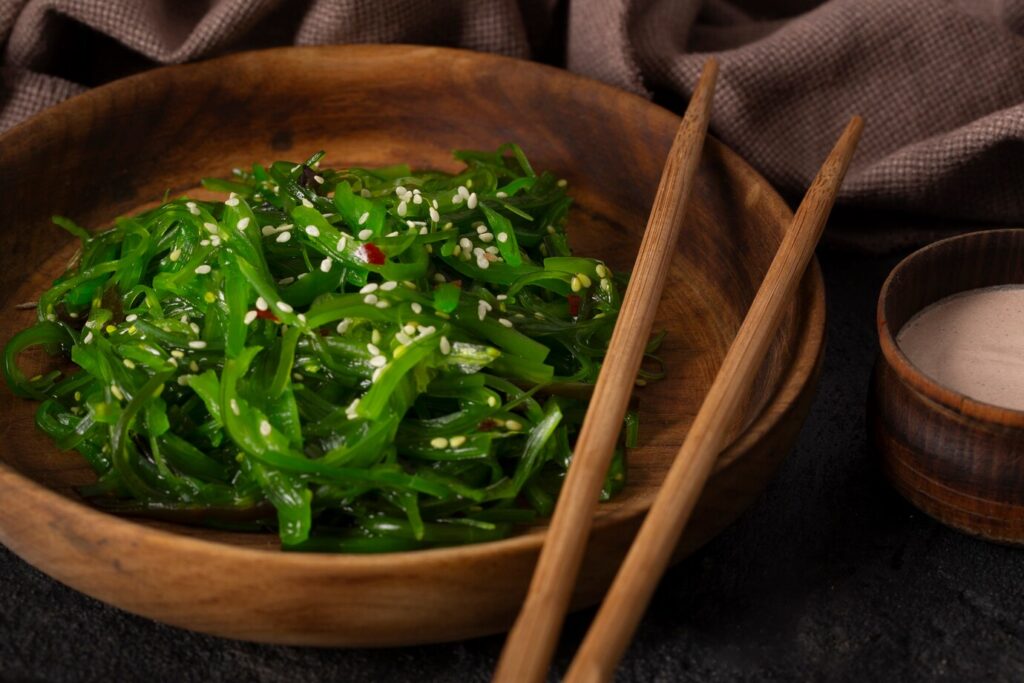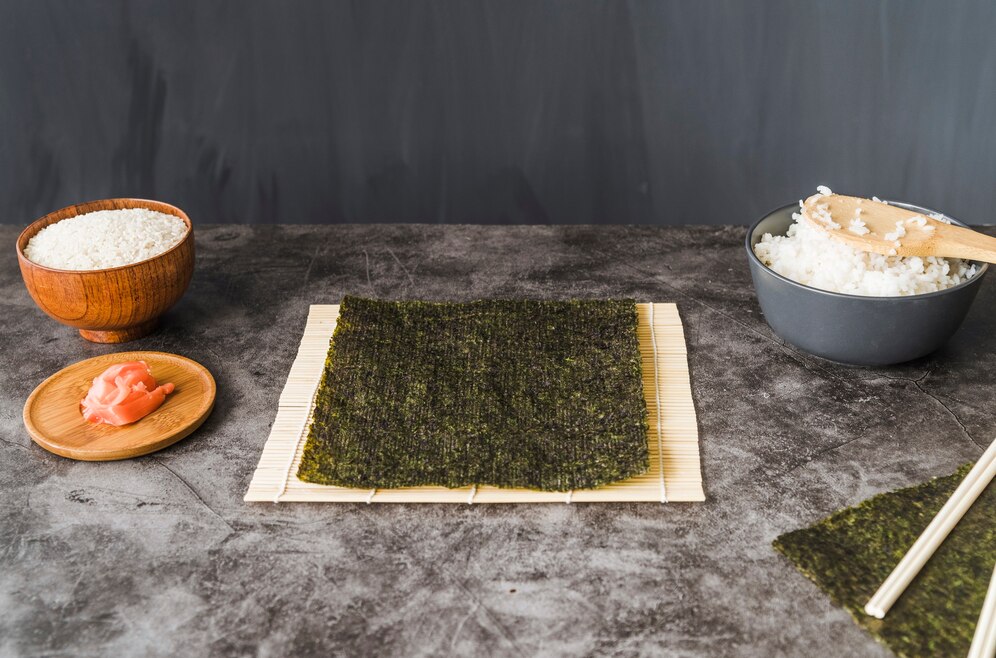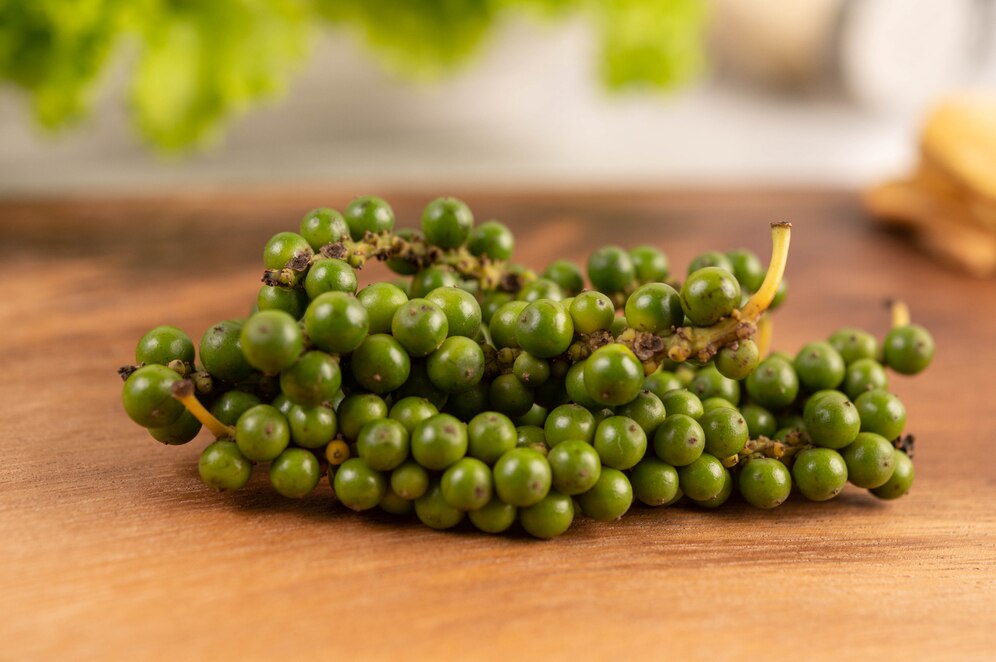The Food Blog

How Different Cultures Use Seaweed in Plant-Based Cooking
Seaweed, a once-universal coastal constituent, is becoming a worldwide vegan superfood. A powerhouse of iodine, calcium and antioxidants, seaweed adds a distinct umami taste to vegan meals. From Japan’s nori-wrapped sushi to Korea’s seaweed salads and Wales’s traditional laver bread, cultures have widely embraced this nutrient-rich ocean vegetable for centuries.
In this guide, you’ll discover how cultures worldwide use seaweed in plant-based dishes. You’ll find tips for cooking with various seaweed types and get inspired by authentic international recipes. Plus, you’ll learn how to add seaweed to everyday meals and why it’s becoming a staple in many vegan kitchens.
Why Seaweed is a Superfood for Vegan Diets

1. Rich in Nutrients
Seaweed is packed with essential vitamins and minerals, making it a powerful addition to plant-based meals. Its nutrient density makes it especially valuable for vegans, who may otherwise miss out on seafood-sourced iodine and omega-3s.
- Iodine: Crucial for thyroid health and metabolism regulation.
- Iron and calcium: Promote bone strength and help prevent anaemia, a common concern for plant-based eaters.
- Magnesium and potassium: Support muscle function and heart health.
- Omega-3s and antioxidants: Reduce inflammation and support cardiovascular health.
2. Natural Umami Flavour
One of the greatest appeals of seaweed in plant-based cooking is its natural umami taste. This savoury, rich flavour enhances dishes and offers a satisfying depth that can replace fish or seafood flavours in vegan recipes.
3. Sustainable and Eco-Friendly
As a low-impact crop, seaweed requires no fresh water, fertiliser, or arable land. It grows abundantly in the ocean, making it one of the most sustainable food sources. Incorporating seaweed into plant-based diets is a win for health and the planet.
Types of Seaweed Used in Global Plant-Based Cooking
1. Nori (Japan)

Description: Thin, dried seaweed sheets commonly used in sushi rolls. Nutritional Profile: Rich in iodine, vitamin C, and omega-3s.
Culinary Uses:
- Sushi rolls: Nori is famously used to wrap sushi rice and vegetables, making it a staple in Japanese cuisine.
- Vegan seafood alternative: Crumble nori into soups or sprinkle over salads to impart a seafood-like flavour.
- Seasoning: Toasted nori flakes add a salty, umami boost to rice, noodles, or popcorn.
Recipe Idea:
Vegan Sushi Rolls (Japan): Nori-wrapped sushi filled with avocado, cucumber, carrot, and pickled radish, served with soy sauce and wasabi.
2. Wakame (Korea & Japan)
Description: Silky, green seaweed with a slightly sweet flavour. Nutritional Profile: High in magnesium, calcium, and fucoxanthin (an antioxidant with potential fat-burning properties).
Culinary Uses:
- Soups: Adds texture and nutrients to miso soup and Korean miyeok-guk (seaweed soup).
- Salads: Rehydrated wakame is commonly used in seaweed salads with sesame oil, soy sauce, and vinegar.
- Side dishes: Often paired with tofu, edamame, or pickled vegetables for protein-rich vegan sides.
Recipe Idea:
Korean Seaweed Salad – Rehydrated wakame with toasted sesame oil, garlic, rice vinegar, and sesame seeds, creating a refreshing and nutrient-packed salad.
3. Dulse (Ireland & Atlantic Canada)
Description: Red seaweed with a slightly salty, smoky flavour. Nutritional Profile: Rich in potassium, iron, and protein, making it ideal for vegan diets.
Culinary Uses:
- Vegan bacon alternative: When fried, dulse takes on a crispy, smoky texture, making it a popular bacon substitute.
- Salads and soups: Adds depth of flavour to stews, broths, and salads.
- Seasoning: Crumbled dulse flakes serve as a natural salt alternative, offering flavour and nutrients.
Recipe Idea:
Irish Dulse and Potato Cakes: Mashed potatoes mixed with dulse flakes, garlic, and herbs are pan-fried until golden and crispy.
4. Kombu (Japan)
Description: Thick, dried kelp used for making dashi (broth). Nutritional Profile: High in iodine, calcium, and fibre.
Culinary Uses:
- Broths and stocks: Kombu is simmered to create a rich, umami-packed broth commonly used in Japanese miso soup.
- Fermented dishes: Added to pickled vegetables to enhance flavour and tenderness.
- Beans and legumes: When cooked with beans, kombu reduces gas-causing compounds, improving digestibility.
Recipe Idea:
Vegan Miso Soup with Kombu: This rich broth is made with kombu, miso paste, tofu, and shiitake mushrooms, garnished with scallions.
5. Hijiki (Japan)
Description: Thin, dark brown seaweed with an earthy, nutty taste. Nutritional Profile: High in fibre, iron, and magnesium.
Culinary Uses:
- Stir-fries: Rehydrated hijiki is sautéed with carrots, edamame, and tofu for a protein-rich vegan dish.
- Salads: Adds depth to cold noodles or rice salads.
- Rice dishes: Mixed into steamed rice for extra nutrients and flavour.
Recipe Idea:
Japanese Hijiki Salad: Rehydrated hijiki with shredded carrots, soy sauce, mirin, and sesame oil, creating a fragrant and healthy side dish.
6. Laver (Wales)
Description: Dark purple seaweed used in traditional Welsh dishes. Nutritional Profile: Rich in protein, iodine, and B vitamins.
Culinary Uses:
- Laverbread: A traditional dish made by pureeing laver into a paste and serving it with oats and toast.
- Soups and stews: Adds a savoury, umami depth to hearty dishes.
- Vegan seafood substitute: Crumbled laver enhances the oceanic flavour in plant-based seafood dishes.
Recipe Idea:
Welsh Laverbread Patties: Mashed potatoes mixed with laver and oats, shaped into patties and pan-fried until crispy and golden.
7. Sea Grapes (Umibudo) – Okinawa, Japan

Description: A seaweed delicacy with tiny, grape-like bubbles that burst with a briny, fresh flavour. Nutritional Profile: Rich in iodine, magnesium, and antioxidants.
Culinary Uses:
- Fresh salads: Sea grapes are enjoyed raw with a light dressing.
- Side dishes: Served with soy sauce and citrus juice for dipping.
- Sushi garnish: Adds a decorative and flavourful touch to plant-based sushi platters.
Recipe Idea:
Okinawan Sea Grape Salad: Fresh sea grapes with cherry tomatoes, cucumber, and a ponzu dressing, creating a light and refreshing dish.
Tips for Cooking with Seaweed
- Soak dried seaweed: Rehydrate dried seaweed in warm water before cooking to improve texture.
- Balance the saltiness: Seaweed is naturally salty, so use less added salt.
- Pair with contrasting flavours: Balance the brininess of seaweed with citrus, ginger, or garlic.
- Use as a seasoning: Crumble seaweed flakes over rice, salads, or soups.
Seaweed: The Trending Superfood
Like any other plant, seaweed has loads of its own flavours, textures, and nutrients, making it the perfect plant-based superfood. From crispy dulse strips in Ireland to wakame salads in Korea, seaweed is a staple ingredient that cultures around the world have come to embrace.
Use other varieties of seaweed to make your plant-based meals. Get authentic recipes from different around the world Add the health+flavour punch seaweed will give your vegan meals.









